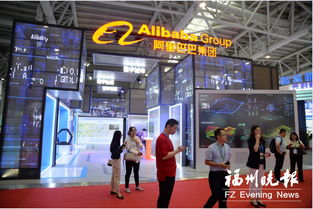随着科技发展的英文
Title: The Development of Technology and its Impact on Society
The development of technology has had a profound impact on society, transforming the way we live, work, and communicate. Advancements in technology have led to increased connectivity, improved access to information, and enhanced efficiency in various industries. Let's explore how technology has evolved and its impact on different aspects of society.
1. Communication and Connectivity:
The advent of the internet and mobile communication devices has revolutionized the way people connect with one another.
Social media platforms have enabled global networking and instant communication, breaking down geographical barriers.
Video conferencing and virtual meeting platforms have transformed the way businesses operate, allowing for remote collaboration and flexible work arrangements.
Recommendation: Embracing digital communication tools can enhance connectivity and streamline collaboration in both personal and professional settings.
2. Healthcare and Medicine:
Technological innovations have significantly advanced medical diagnostics, treatment options, and patient care.
Telemedicine has emerged as a valuable resource, allowing patients to consult with healthcare providers remotely.
Roboticassisted surgeries and minimally invasive procedures have improved precision and recovery times.
Wearable healthmonitoring devices provide individuals with realtime data, promoting proactive health management.
Recommendation: Investing in telemedicine infrastructure and staying informed about wearable health technologies can improve healthcare accessibility and outcomes.
3. Education and Learning:
Technology has transformed the educational landscape, offering digital learning resources and interactive platforms for students and educators.
Elearning opportunities have expanded, providing access to educational materials from anywhere in the world.

Virtual reality (VR) and augmented reality (AR) technologies are being integrated into educational experiences, enhancing engagement and understanding.
Adaptive learning software personalizes the learning experience, catering to individual student needs and learning styles.
Recommendation: Incorporating digital learning tools and staying abreast of educational technology trends can optimize the learning experience for students and educators.
4. Business and Industry:
Automation and artificial intelligence (AI) have streamlined business operations, increasing productivity and efficiency.
Data analytics tools enable companies to gather and analyze large volumes of information, leading to informed decisionmaking.
Ecommerce platforms have expanded market reach and transformed consumer behavior.
Cybersecurity measures are crucial as businesses navigate digital transactions and protect sensitive data.
Recommendation: Embracing digital transformation, investing in cybersecurity measures, and leveraging data analytics can drive business growth and resilience.
5. Environmental Impact:
Technology has the potential to address environmental challenges through renewable energy sources, advanced recycling methods, and sustainable practices.
Smart infrastructure and urban planning technologies contribute to ecofriendly and efficient city development.
Remote sensing and monitoring technologies aid in environmental conservation efforts and natural disaster management.
Recommendation: Supporting and investing in green technologies and sustainable practices can contribute to environmental preservation and climate action.
In conclusion, the ongoing development of technology continues to reshape and redefine various aspects of society, presenting both opportunities and challenges. Embracing these technological advancements while addressing associated risks can lead to a more interconnected, efficient, and sustainable future.











